What is Hawaii known for food? | What is Hawaii famous for food?

- By
- Aparna Patel
- |
- 3 Apr, 2023
- |
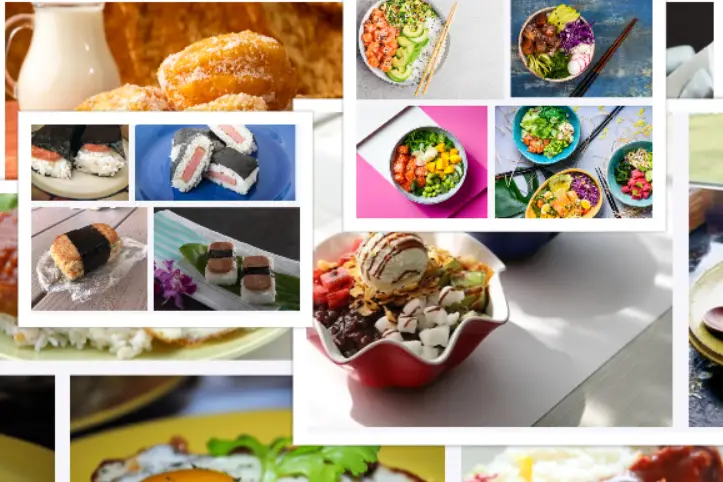
Hawaii is known for its beautiful beaches, stunning landscapes, and unique culture, but it is also famous for its delicious and diverse cuisine. With influences from Polynesian, Asian, and American cultures, Hawaiian food is a fusion of flavors and ingredients that creates a one-of-a-kind culinary experience.
From traditional dishes like poke and plate lunch to sweet treats like shave ice and malasadas, Hawaii has something for every palate. The state’s fresh, locally-sourced ingredients are also a key factor in the deliciousness of Hawaiian food, with seafood, tropical fruits, and vegetables like taro being some of the most commonly used ingredients.
In this blog post, we’ll take a closer look at the foods that Hawaii is famous for, including their cultural and historical significance. We’ll explore the unique ingredients and cooking techniques that make Hawaiian cuisine so special and learn about the influences that have shaped the state’s culinary scene over time. Join us as we discover the flavors and dishes that make Hawaii’s cuisine a true delight for food lovers.
Hawaii is known for its unique and diverse cuisine, which is influenced by a variety of cultures, including Polynesian, Asian, and American. Hawaiian food is known for its bold and complex flavors, with a focus on fresh, locally-sourced ingredients. Here are some of the top foods that Hawaii is famous for:
- Poke: This traditional Hawaiian dish consists of raw fish marinated in a mixture of soy sauce, sesame oil, and other seasonings. Poke has become increasingly popular in recent years and can be found in many restaurants and markets throughout Hawaii.
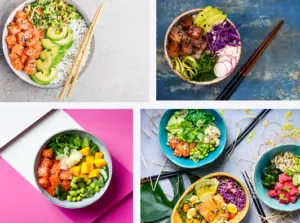
Hawaiian poke is a traditional dish that originated in Hawaii and has become increasingly popular in recent years. It typically consists of marinated raw fish, usually ahi tuna, seasoned with soy sauce, sesame oil, and other ingredients, such as seaweed, onion, and chili peppers.
Poke is a versatile dish and can be enjoyed in many different ways. It can be served as an appetizer, a main course, or even in a poke bowl, which usually includes a base of rice or greens, the marinated fish, and various toppings such as avocado, cucumber, and tobiko (flying fish roe).
Although traditional poke is made with ahi tuna, other types of fish, such as salmon or octopus, can also be used. In addition, there are many variations of poke that incorporate different flavors and ingredients, such as spicy mayo, wasabi, mango, or even quinoa.
Overall, Hawaiian poke cuisine is a delicious and healthy option that is sure to satisfy seafood lovers and those looking for a fresh and flavorful meal.
- Spam musubi: This snack is made by placing a slice of spam on top of a block of rice and wrapping it in seaweed. It is a popular snack in Hawaii and can be found at many convenience stores and markets.
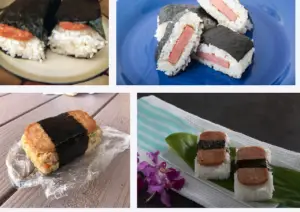 Spam musubi is a popular Hawaiian snack or meal made with Spam (a canned meat product), rice, and nori seaweed. It is a fusion of Japanese and Hawaiian cuisine and has become a staple food in Hawaii.To make spam musubi, a slice of Spam is typically fried and then placed on top of a block of rice, which has been seasoned with rice vinegar, salt, and sugar. The Spam and rice are then wrapped in a strip of nori seaweed to form a rectangular shape, similar to sushi.
Spam musubi is a popular Hawaiian snack or meal made with Spam (a canned meat product), rice, and nori seaweed. It is a fusion of Japanese and Hawaiian cuisine and has become a staple food in Hawaii.To make spam musubi, a slice of Spam is typically fried and then placed on top of a block of rice, which has been seasoned with rice vinegar, salt, and sugar. The Spam and rice are then wrapped in a strip of nori seaweed to form a rectangular shape, similar to sushi.
While Spam may seem like an unlikely ingredient for a sushi-like dish, it has a long history in Hawaii, dating back to World War II when it was introduced as a part of military rations. Spam quickly became popular in Hawaii and is now used in a variety of local dishes, including spam musubi.
Spam musubi is often enjoyed as a snack or on-the-go meal, and it can be found in many convenience stores and markets throughout Hawaii. It is a tasty and filling option for those looking for a quick bite or a unique culinary experience.
- Plate lunch: This classic Hawaiian meal consists of a protein (usually meat or fish), two scoops of rice, and a serving of macaroni salad. It is a filling and affordable meal that is popular among locals and visitors alike.
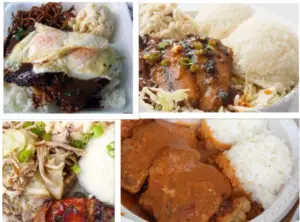 The Hawaiian plate lunch is a popular local meal that consists of a generous serving of rice, macaroni salad, and an entrée, usually a meat dish such as teriyaki chicken, kalua pork, or beef short ribs.The origins of the plate lunch can be traced back to the plantation era in Hawaii, when immigrant laborers would bring meals from their respective cultures to work. Over time, these different foods began to mix and influence each other, resulting in the plate lunch as we know it today.
The Hawaiian plate lunch is a popular local meal that consists of a generous serving of rice, macaroni salad, and an entrée, usually a meat dish such as teriyaki chicken, kalua pork, or beef short ribs.The origins of the plate lunch can be traced back to the plantation era in Hawaii, when immigrant laborers would bring meals from their respective cultures to work. Over time, these different foods began to mix and influence each other, resulting in the plate lunch as we know it today.
Plate lunches are served in many different establishments throughout Hawaii, from small mom-and-pop shops to larger chain restaurants. They are often affordable and filling, making them a popular option for locals and tourists alike.
In addition to the traditional meat dishes, plate lunches can also include other local favorites such as loco moco (rice topped with a hamburger patty, fried egg, and gravy), poke, or spam musubi. Plate lunches can be customized to include a variety of sides, such as green salad or kimchi, to cater to individual tastes.
Overall, the Hawaiian plate lunch is a delicious and satisfying meal that offers a taste of the unique blend of cultures and flavors that make up Hawaiian cuisine.
- Shave ice: This refreshing treat consists of finely shaved ice topped with flavored syrups and condensed milk. It is a popular dessert in Hawaii, especially on hot days.

- Loco moco: This hearty dish consists of a bed of rice topped with a hamburger patty, a fried egg, and gravy. It is a filling and satisfying meal that is popular in local diners and restaurants.
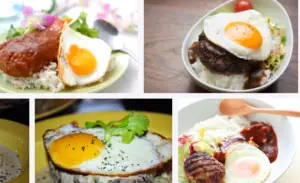 Loco moco is a popular Hawaiian dish that typically consists of white rice topped with a hamburger patty, a fried egg, and brown gravy. The origins of the dish are not entirely clear, but it is believed to have been created in the 1940s at a restaurant in Hilo, Hawaii.The dish has since become a staple in Hawaiian cuisine and can be found in many local restaurants and diners. There are also many variations of the dish, with some restaurants adding bacon, spam, or other toppings.
Loco moco is a popular Hawaiian dish that typically consists of white rice topped with a hamburger patty, a fried egg, and brown gravy. The origins of the dish are not entirely clear, but it is believed to have been created in the 1940s at a restaurant in Hilo, Hawaii.The dish has since become a staple in Hawaiian cuisine and can be found in many local restaurants and diners. There are also many variations of the dish, with some restaurants adding bacon, spam, or other toppings.
To make loco moco, start by cooking the rice according to package instructions. While the rice is cooking, prepare the hamburger patty by shaping ground beef into a patty and seasoning it with salt and pepper. Cook the patty in a skillet or on a grill until it is cooked through.
In a separate pan, fry an egg to your desired doneness. Once the rice, hamburger patty, and egg are all cooked, assemble the dish by placing a scoop of rice on a plate, followed by the hamburger patty and then the fried egg. Finally, pour brown gravy over the entire dish. Enjoy your delicious Hawaiian Loco Moco!
- Malasadas: These Portuguese-style donuts are a popular dessert in Hawaii. They are deep-fried and coated in sugar, and can be filled with a variety of flavors like chocolate, coconut, or haupia (coconut pudding).
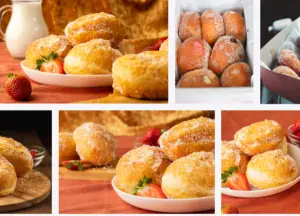 Malasadas are a popular Hawaiian cuisine that originated in Portugal. They are a type of doughnut that is deep-fried until golden brown and then coated with sugar. Malasadas are usually served hot and are a popular snack or breakfast item in Hawaii.The dough for malasadas is made with flour, yeast, sugar, eggs, milk, butter, and salt. Once the dough has risen, it is shaped into small balls and then deep-fried until golden brown. The hot malasadas are then rolled in granulated sugar or a mixture of sugar and cinnamon.
Malasadas are a popular Hawaiian cuisine that originated in Portugal. They are a type of doughnut that is deep-fried until golden brown and then coated with sugar. Malasadas are usually served hot and are a popular snack or breakfast item in Hawaii.The dough for malasadas is made with flour, yeast, sugar, eggs, milk, butter, and salt. Once the dough has risen, it is shaped into small balls and then deep-fried until golden brown. The hot malasadas are then rolled in granulated sugar or a mixture of sugar and cinnamon.
In Hawaii, malasadas are often filled with different flavors such as custard, chocolate, or fruit. They can also be enjoyed plain or with a variety of toppings such as coconut, sprinkles, or nuts.
Malasadas are commonly enjoyed during the annual Portuguese festival of Mardi Gras, which is also known as Malasada Day. On this day, malasadas are sold by the dozen at various bakeries and restaurants across Hawaii.
If you’re visiting Hawaii, be sure to try malasadas for a sweet and delicious treat.
Overall, Hawaii’s cuisine is a unique blend of cultures and flavors that reflect the islands’ rich history and diverse population.
Read more
- What fruit is Hawaii known for?
- What is Hawaii known for agriculture?
- What is Hawaii known for?
- What fruit is Florida known for? | Local & Delicious Florida Fruits
- What fruit trees are native to Florida?
- What is California known for fruit?
- What is California known for agriculture?| What vegetable is California known for?
- Why are redwood trees so big?| How tall are redwood trees?
- What is Redwood National Park famous for?
- What city are the redwoods in California?
- Why do redwoods only grow in California?
FAQ:
Q: What are some of the top local and delicious fruits that are grown in Hawaii?
A: Hawaii is home to a variety of delicious fruits that are grown locally, including papaya, pineapple, mango, lychee, and passion fruit.
Q: What is unique about Hawaii’s fruits compared to other fruits?
A: Hawaii’s unique climate and soil make it an ideal location for growing tropical fruits, which have a distinct flavor and sweetness compared to fruits grown in other regions.
Q: Where can I find Hawaii’s local fruits?
A: Hawaii’s local fruits can be found at farmers’ markets, roadside stands, and in some grocery stores throughout the islands. Some fruits are seasonal, so it’s best to check with local vendors for availability.
Q: What are the health benefits of Hawaii’s fruits?
A: Hawaii’s fruits are high in vitamins, minerals, and antioxidants, making them a nutritious addition to any diet. Papaya, for example, is an excellent source of vitamin C, while pineapple contains bromelain, which aids in digestion.
Q: What are some popular ways to enjoy Hawaii’s fruits?
A: Hawaii’s fruits can be enjoyed in many ways, including sliced, diced, or blended into smoothies or juices. Some fruits, such as pineapple and papaya, are also used in savory dishes such as salads and stir-fries.
Q: Are Hawaii’s fruits expensive?
A: The cost of Hawaii’s fruits varies depending on the season and availability. However, buying locally grown fruits can often be more affordable than imported fruits.
Q: Can I bring Hawaii’s fruits back home with me?
A: Some fruits, such as papaya and pineapple, can be brought back to the mainland United States. However, it’s important to check with the USDA’s regulations to ensure compliance with quarantine rules and restrictions.
Q: Are Hawaii’s fruits sustainable?
A: Many farmers in Hawaii practice sustainable farming methods, such as using organic practices and reducing pesticide use. Buying locally grown fruits also supports sustainable agriculture and reduces the environmental impact of importing fruits from other regions.
Q: Are there any rare or exotic fruits grown in Hawaii?
A: Yes, Hawaii is home to several rare and exotic fruits, such as rambutan, durian, and dragon fruit. These fruits can be found at specialty markets and some farmers’ markets throughout the islands.
Search Posts
Latest posts
-
4 Mar, 2024
How can I do a "broad" search for flights?
-
5 Mar, 2024
Why prohibit engine braking?